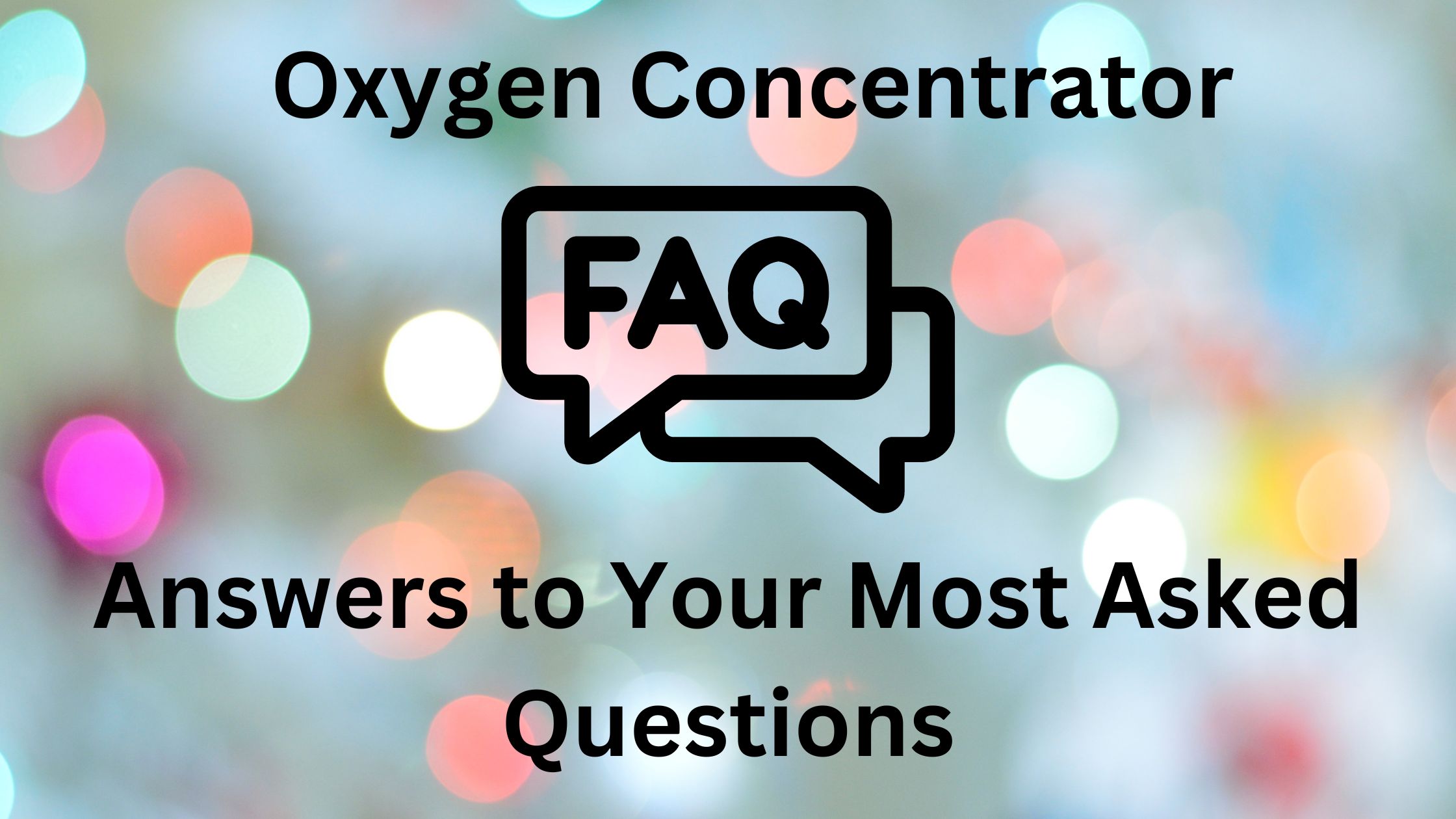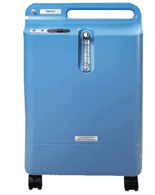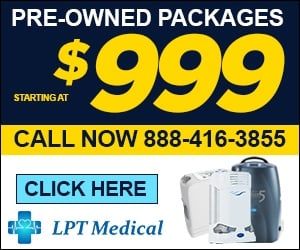
In this day and age, it’s harder than ever to navigate America’s convoluted health care system. At times it can feel like it’s impossible to find an answer to the simplest of questions. And other times, it can even feel like our own doctors, caretakers, or medical equipment providers are working against us instead of for us. What’s more, as we age, we face higher health insurance costs with fewer and fewer options for saving money along the way.
It’s not all grim, though! If you have chronic obstructive pulmonary disease (COPD), cystic fibrosis (CF), or any other respiratory illness that requires you to undergo oxygen therapy, there are many resources out there to help you answer your most burning questions. Most notably, our respiratory specialists here at LPT Medical are here to answer all your questions concerning oxygen delivery equipment and oxygen therapy in general.
Feel free to get in touch with us either by phone or email and ask us anything you need. Remember, there is no “silly” or “bad” question when it comes to your health. Chances are if you’re wondering something, there are other people in your situation who are wondering the same thing. In the meantime, continue reading to discover the answers to some of the most commonly asked questions about oxygen concentrators.
What is an Oxygen Concentrator?
An oxygen concentrator is a type of oxygen administration device used to treat a variety of respiratory ailments including COPD and cystic fibrosis. Oxygen concentrators are similar to oxygen tanks in that they deliver medical grade oxygen which is inspired via a nasal cannula or oxygen mask. Concentrators were introduced around the 1970s and portable versions became more widely available in the early 2000s.

The key difference between concentrators and oxygen tanks is that oxygen concentrators contain no compressed oxygen or liquid of any kind. As a result, oxygen concentrators don’t have many of the safety risks that are commonly associated with compressed oxygen. They’re also much easier to use and less costly which has made them popular as a long-term treatment option for many pulmonary diseases.
How Does an Oxygen Concentrator Work?
Earth’s atmosphere contains about 78 percent nitrogen, 21 percent oxygen, and the remaining 1 percent is made up of a variety of other gases. For someone with healthy lungs, this is enough oxygen, but for someone with impaired lung function, a higher concentration of oxygen is needed. An oxygen concentrator is designed to take in air, remove the nitrogen and distribute a higher grade of oxygen. In COPD patients, this can reduce shortness of breath, chronic pain, and improve overall quality of life.

Since oxygen concentrators are electronic devices, you’ll need to have access to some source of power. Home oxygen concentrators need to be plugged into a wall outlet but portable oxygen concentrators have batteries that can be charged and attached to your oxygen machine to power it wherever you go. Most oxygen concentrators allow you to control “flow rate,” or the amount of oxygen that comes out of the device in a given amount of time. The lower the flow setting, the longer the battery will last.
What is the Difference Between Pulse Flow and Continuous Flow?
Oxygen concentrators are generally divided into two categories: pulse flow concentrators and continuous flow concentrators. Continuous flow is similar to what you’d expect from an oxygen tank or liquid oxygen tank. These devices will put out oxygen in a constant stream and are usually measured in liters per minute (LPM). Pulse flow machines are more advanced and actually have the ability to measure your breathing rate. When you inhale, a pulse dose machine will put out a small dose of oxygen called a “bolus.”

One of the biggest benefits of pulse flow concentrators is that they are almost always smaller and lighter than their continuous flow counterparts. Portable oxygen concentrators like the Inogen One G5 weigh just 4.7 pounds meaning it’s light enough to carry over your shoulder or even hold in your hands while you go about your day and it’s even small enough to fit in a purse, but we don’t recommend doing that! Continuous flow portable oxygen concentrators like the SeQual Eclipse 5 offer plenty of power and a high oxygen output but it’s nowhere near as portable. You’ll typically need to use a wheeled cart in order to transport your continuous flow POC.
Are Oxygen Concentrators Noisy?
One of the biggest concerns many people have about purchasing an oxygen concentrator for the first time is the sound that they will make. While oxygen concentrators aren’t as quiet as compressed oxygen tanks or liquid oxygen tanks, they are much quieter than most people expect. In general, most oxygen concentrators vary in sound output from around 30 decibels (dBA) to around 50 dBA. This is about the volume of a quiet whisper or a quiet conversation.

One thing to note about oxygen concentrator sound is that the lower the flow setting you’re on, the quieter they will be. So, unless you’re running it on its highest setting, you shouldn’t have too much to worry about. You’ll be able to use your portable oxygen concentrator in a library or during a church service without bugging anyone. Many oxygen patients describe it like the sound of a refrigerator; at first, you’ll hear it, but after a while, you won’t even notice it.
The accessories you use with your oxygen concentrator can also affect how much noise they make. For example, if you use carrying options like the G5 custom carrying case or the G3 GO2 Carryall, they may help to conceal some of the sounds of the oxygen machine. However, you should take care not to use your own carrying bag to store your unit because these ones are specially made to ensure all of the intake vents are open.
Does Medicare Pay for Oxygen Concentrators?
Out of all of the questions we’ve answered on this page, this one is by far the trickiest and the least “straightforward.” The short answer is “No.” Medicare and most other health insurance companies will not help you pay for a home oxygen concentrator or portable oxygen concentrator. However, it’s a little more complicated than that.

Medicare classifies oxygen concentrators as “durable medical equipment” (DME). According to Medicare Part B, the rental of oxygen equipment prescribed by your doctor is covered if you meet certain criteria. But this only pertains to medical oxygen tanks. The reason they likely do this is that oxygen concentrators have a higher upfront cost and health insurance companies look for any way they can to avoid paying you the money you’re due. Medicare views oxygen concentrators as “luxury items” rather than a medical necessity.
While it’s unfortunate you won’t receive compensation for purchasing an oxygen concentrator, there are other options available to you. At LPT Medical, we offer convenient financing options so that you can pay for your concentrator over time rather than paying for it all upfront. We also run a lot of sales on our top oxygen concentrators, so keep an eye out for those as well.
Where Can I Buy an Oxygen Concentrator?
If you’re looking for portable oxygen concentrators for sale online, it’s imperative that you do your research and understand what you’re buying. There are many different scams out there that you can easily fall for if you aren’t careful. For example, you may see advertisements for cheap portable oxygen concentrators on popular e-commerce sites. While these oxygen machines may be affordable, they don’t provide you with medical-grade oxygen. In the United States, it’s required by law that you have a prescription for oxygen, so if a site offers you a unit without checking your prescription, you know they’re a scam!

Another thing you should take note of is the difference between “medical-grade oxygen” and “recreational oxygen.” Some popular outdoor recreation sites like REI and others will offer small portable oxygen cylinders that can be used while hiking or climbing at high altitudes. These are NOT designed for treating respiratory conditions and there is very little evidence to suggest they’re even beneficial.
.png?width=216&name=G5-Oxygen-Concentrator_418x418-removebg-preview%20(1).png)
If you want to get a high-quality portable oxygen concentrator it’s best to stick with popular and reputable brands like Inogen, Respironics, CAIRE, and AirSep. While there are higher upfront costs for these portable oxygen concentrators, they’re far more durable and will last you for many years to come. What’s more, they’re often backed by great warranties that protect your purchase. The same can’t be said for cheap oxygen concentrators you can find online.
Can You Fly With an Oxygen Concentrator?
The Federal Aviation Administration (FAA) oversees all safety regulations pertaining to medical oxygen machines and in-flight use. In the past, when oxygen tanks were the only form of oxygen therapy, there was no such thing as an “FAA-approved oxygen machine.” But due to the lightweight design of modern portable oxygen concentrators and the fact that they contain no compressed oxygen, most POCs are approved by the FAA.
.jpg?width=409&name=dreamstime_xxl_3205918%20(1).jpg)
However, just to be certain, you should ask about FAA approval before you buy an oxygen concentrator. If you’d like to travel a lot, pulse flow portable oxygen concentrators will be your best choice because they’re much lighter, smaller, and easier to use than continuous flow concentrators. Also, be sure to contact your airline at least 48 hours before your flight to let them know you will be carrying a concentrator. Most airlines require you to have at least 1.5 times the flight duration in battery life.
How Long Do Oxygen Concentrators Last?
Every oxygen concentrator is different, however, if you purchase from a reputable dealer and you choose a respected brand, you can expect your oxygen concentrator to last around 4 to 7 years. It’s difficult to nail down an exact time frame because every oxygen patient has different needs. Some people will need to run their oxygen concentrator 24/7 but others will only need to use it several hours a day.

In the long term, most oxygen patients find that oxygen concentrators are far more affordable than oxygen tanks. While oxygen tanks have a low upfront cost, you need to constantly pay to refill them and if you want to refill them on your own, you’ll need to buy a special home oxygen concentrator anyways. This doesn’t even take into account the fact that you’ll likely want to have a second oxygen tank as a backup.
When you’re looking at oxygen concentrators online, be sure to take note of the warranty that’s offered by the manufacturer. Most oxygen concentrators have a 3-year warranty, but in certain situations, you’ll have the opportunity to extend it. This is a great option if you want your oxygen machine to last as long as possible.
How Much Does a Portable Oxygen Concentrator Cost?
Cost is another variable when it comes to purchasing an oxygen concentrator. Keep in mind that oxygen concentrators have been around for quite some time. And since they were introduced in the 1970s, things have changed a lot. Nowadays, there are plenty of options including home oxygen concentrators, continuous flow oxygen concentrators, and pulse flow oxygen concentrators. Prices will also vary from brand to brand.

If you want to get a great deal on a portable oxygen concentrator, keep an eye out for oxygen concentrator sales. Right now, LPT Medical is currently offering a FREE Thrive E-Learning membership with the purchase of any POC. This course includes access to expert medical advice, step-by-step breathing exercises, direct access to a private support group, and much more.
What is the Best Portable Oxygen Concentrator?
It’s impossible to say what the “best portable oxygen concentrator” is because everyone has different needs. For example, an oxygen patient with high oxygen flow needs may want the Inogen One G5 which offers a maximum oxygen output of 1,260 ml/min. However, someone with low oxygen needs may opt for something like the AirSep Focus, the lightest oxygen concentrator ever produced.

With that being said, it is possible to rank oxygen concentrators in terms of overall reliability and value. Next week, we will be posting about the best portable oxygen concentrators on the market in 2023. If you need help choosing an oxygen concentrator in 2023 don't hesitate to call LPT Medical at 1+(800)-946-1201.
Conclusion
While it may seem intimidating trying to purchase an oxygen concentrator, we aim to help every patient find the best oxygen concentrator for their wants and needs. There are a lot of factors to take into consideration such as weight, size, total oxygen output, battery life, and ease-of-use, so if you’d like to know more or your question wasn’t answered here, please feel free to give us a call or send us an email. You can also fill out the contact form at the side of this page and we’ll get back to you as soon as we can.


.png)





